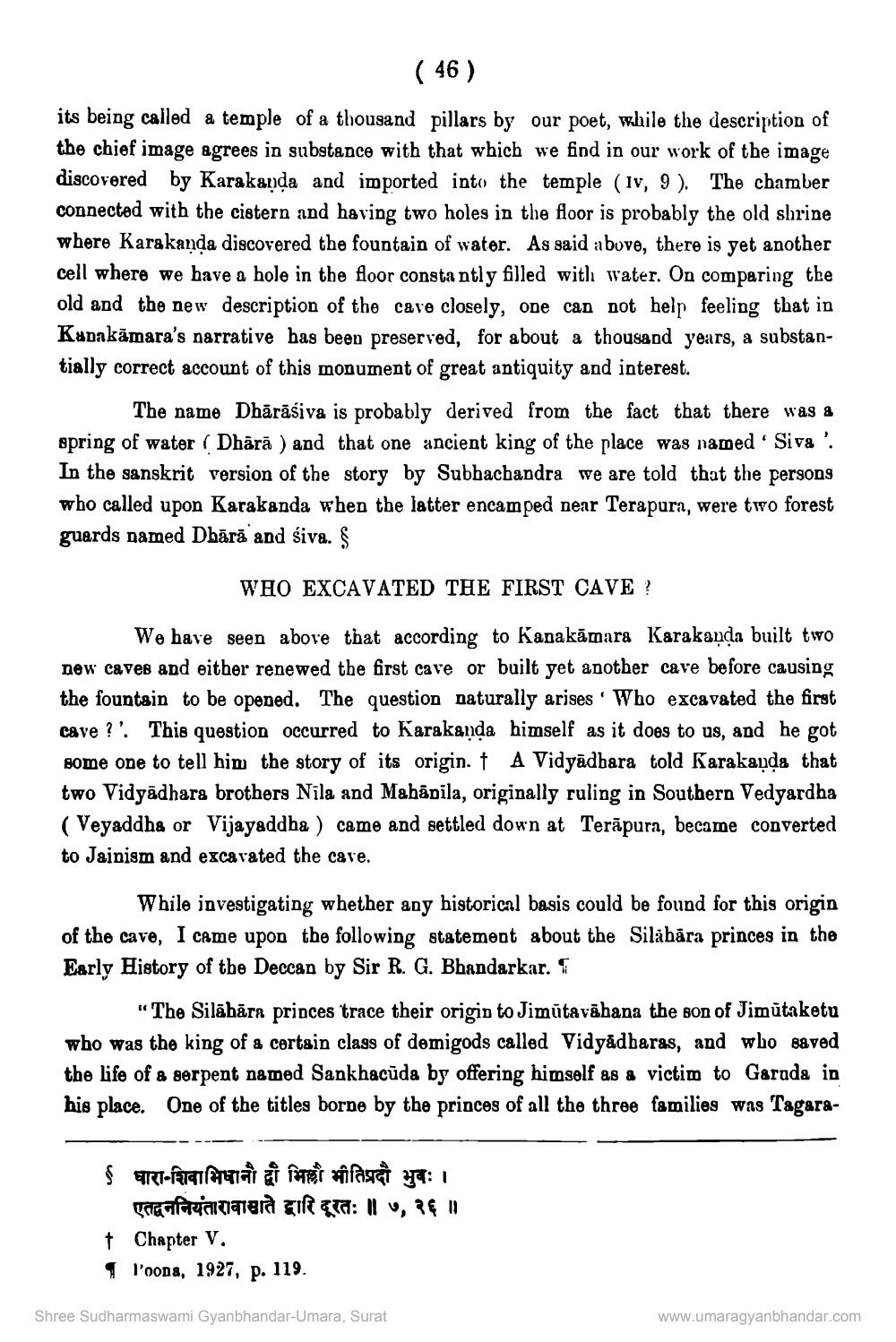________________
( 46 ) its being called a temple of a thousand pillars by our poet, while the description of the chief image agrees in substance with that which we find in our work of the image discovered by Karakanda and imported into the temple (Iv, 9). The chamber connected with the cistern and having two holes in the floor is probably the old shrine where Karakanda discovered the fountain of water. As said above, there is yet another cell where we have a hole in the floor consta ntly filled with water. On comparing the old and the new description of the cave closely, one can not help feeling that in Kadakāmara's narrative has been preserved, for about a thousand years, a substantially correct account of this monument of great antiquity and interest.
The name Dhārāśiva is probably derived from the fact that there was a spring of water ( Dhārā ) and that one ancient king of the place was named 'Siva'. In the sanskrit version of the story by Subhachandra we are told that the persons who called upon Karakanda when the latter encamped near Terapura, were two forest guards named Dbārā and śiva. S
WHO EXCAVATED THE FIRST CAVE ?
We have seen above that according to Kanakāmara Karakanda built two new caves and either renewed the first cave or built yet another cave before causing the fountain to be opened. The question naturally arises ' Who excavated the first cave ?'. This question occurred to Karakanda himself as it does to us, and he got some one to tell him the story of its origin. † A Vidyādbara told Karakayda that two Vidyādhara brothers Nila and Mahāpila, originally ruling in Southern Vedyardha (Veyaddha or Vijayaddha ) came and settled down at Terāpura, became converted to Jainism and excavated the cave.
While investigating whether any historical basis could be found for this origin of the cave, I came upon the following statement about the Silahāra princes in the Early History of the Deccan by Sir R. G. Bhandarkar. S.
"The Silāhāra princes trace their origin to Jimūtavāhana the son of Jimūtaketu who was the king of a cortain class of domigods called Vidyadbaras, and who saved the life of a serpent named Sankhacuda by offering himself as a victim to Garada in his place. One of the titles borne by the princes of all the three families was Tagara
६ धारा-शिवाभिधानी द्वौ भिल्लो भीतिप्रदौ भुवः।
एतद्धननियंतारावासाते दारि दूरतः ॥ ७, २६ ॥ † Chapter V.
l'oona, 1927, p. 119.
Shree Sudharmaswami Gyanbhandar-Umara, Surat
www.umaragyanbhandar.com




